Genre: Action Developer: Sonic Team Publisher: Sega Ent. Players: 2 Released: 1996
After the massive success Sonic The Hedgehog became for Sega in the 16-bit era, it is incredibly puzzling that the debut game from Sonic Team for the Saturn was not a brand new Sonic game but instead one starring a purple jester who soared through the sky. NiGHTS Into Dreams is an experience that is unique and hard to draw comparisons to even to this day, let alone in 1996. For better or worse, this would become a common story for the Saturn, as Sega would leave behind many of its biggest franchises at the time, pushing forward instead with new ideas.
NiGHTS stars the two young kids Claris and Elliot, who are both trying to overcome hardships in their lives. Claris is struggling with stage fright and ends up running off stage as she begins her singing audition, while Elliot walks back home alone after he misses his chance to shine in a basketball game. The children go home unsure of themselves, but that evening when they go to sleep, they are whisked away to the dream world of Nightopia. It is here they meet the being known as Nights. As they enter the dream world, the evil Nightmaren monsters lead by the all-powerful Wizeman steal the children’s dream energy. Quickly after teaming up with the nearby Nights, Claris and Elliot rush off to recover that which has been taken from them before it is too late.
After the very brief intro movie sequence, the player is dropped right in after deciding which of the kids to start out as. Claris and Elliot each have four dream stages, with the final stage being shared between both, making for a total of seven unique dreams. Each of these stages open with either character dropped into a full 3D world that can be explored before the Nightmaren quickly swoop in to steal their dream energy and place it in devices called Ideya Captures throughout the area. When Claris or Elliot meet up with Nights, the game shifts styles completely to take place on a 2.5d style side-scrolling viewpoint that twists and turns throughout four different courses, known as Mares. In order to break open these Ideya Captures, the player needs to grab 20 blue chips that are placed throughout each Mare and then return the recovered dream energy to the starting point. After completing all four Mares, the player is then taken to the final boss confrontation before the dream is completed. Many of these fights revolve around Nights’s ability to do a speedy drill attack through the air as well as grab and throw certain objects. Running out of time here will force a game over and require the whole level to be repeated which can be a source of frustration initially, since some of the boss fights can be a bit tricky to figure out the first time through.
As a game, Nights is somewhat like a mix between a score attack arcade game and a high speed racer. Instead of the the goal being to get to the end of each stage, the game instead has a grading system that rewards players who take advantage of every second and link together as many of the rings, chips, and stars as possible that fill each course. Each of the four Mares starts off with a timer set for 120 seconds, and a bonus time mode that doubles your score multiplier starts the moment the Ideya Captures are broken. While this segment does end the moment the player returns back to the start, waiting to the very last second to return is key to drastically increasing your score as well as the final grade obtained. However if the player doesn’t make it back before the timer runs out, all the points achieved in that segment are lost, as Claris or Elliot separate from Nights and have to scramble back while avoiding the roaming clocks that will wake them up from their dream. It may take just a C grade average to unlock each of the stages, but the true final ending is only reached by getting an A across the whole game.
Alongside a simple two-player versus mode that pits players against each other in a contest to capture each other inside loops, there is the curious artificial “A-Life” system that alters the game depending on the mood of the Nightopians. The game provides almost no explanation to the player about it, but the speed, tempo, and melody of the music in each stage can be changed based on whether you make these little creatures flying around in each dream happy or sad. Over the course of multiple replays, the music will change a surprising amount!
My own personal fascination with NiGHTS Into Dreams stems from how well it captures the fantastical element of dreams, not only with the surreal visuals but also with the way each dream delves into specific aspects of each child’s inner hopes, dreams, and fears. For example, Claris’s third dream stage, Soft Museum, is subtitled in game as “the confusion” and is filled with illusions, paths that morphs as you glide across them, and a museum of trick mirrors that reveal hidden items. Meanwhile, Elliot has a dream of a vast desert construction site called Stick Canyon. It’s littered with dangerous contraptions, a towering structure being built, and wild roller coaster rail rides that is aptly subtitled as “the revival,” a clear representation of Elliot’s desire to build up his courage and become a better athlete. Details like this fill each of the dreams and show the level of care and thought that can be found for those that care to look but not at the detriment for those that just want to jump right into the action.
Overall, NiGHTS Into Dreams is an interesting new concept for a game that was thrust unfairly into being the next big thing for the Saturn. Thankfully, even though NiGHTS did not end up becoming the next big series for Sonic Team, it still stands as one of the Saturn’s defining releases. For those that are looking for a uniquely Sega experience and are willing to explore or constantly better their mastery of the game, NiGHTS Into Dreams is an experience truly as special as the grandest dreams we hope to find each night.
Score: 9 out of 10

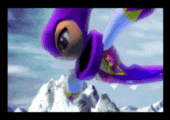
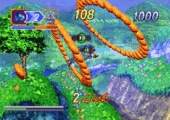
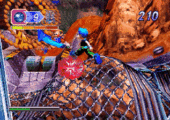
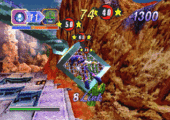
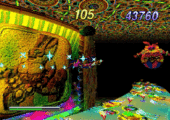
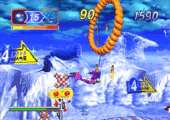
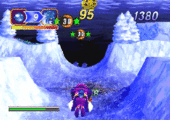
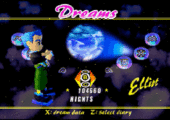
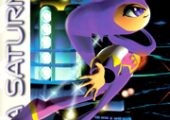
Recent Comments